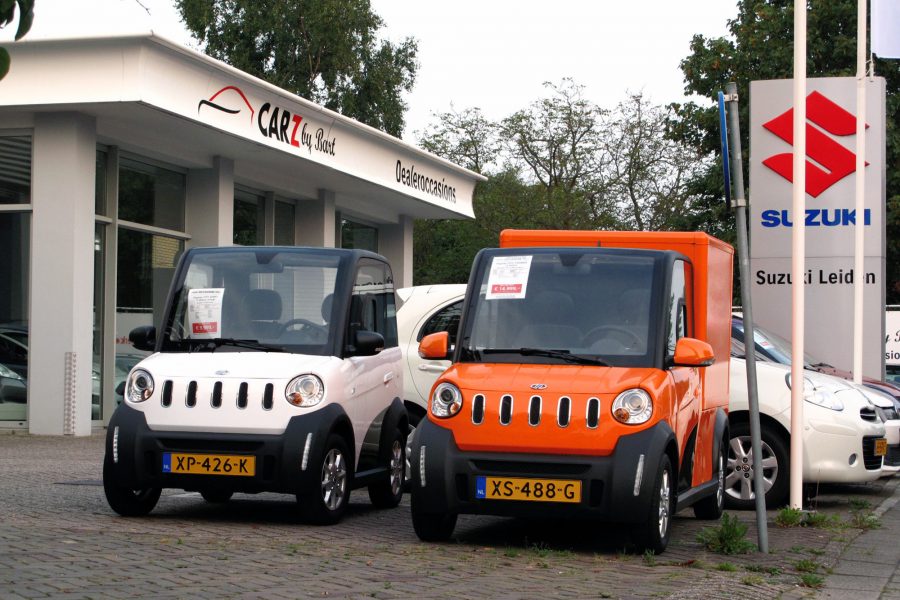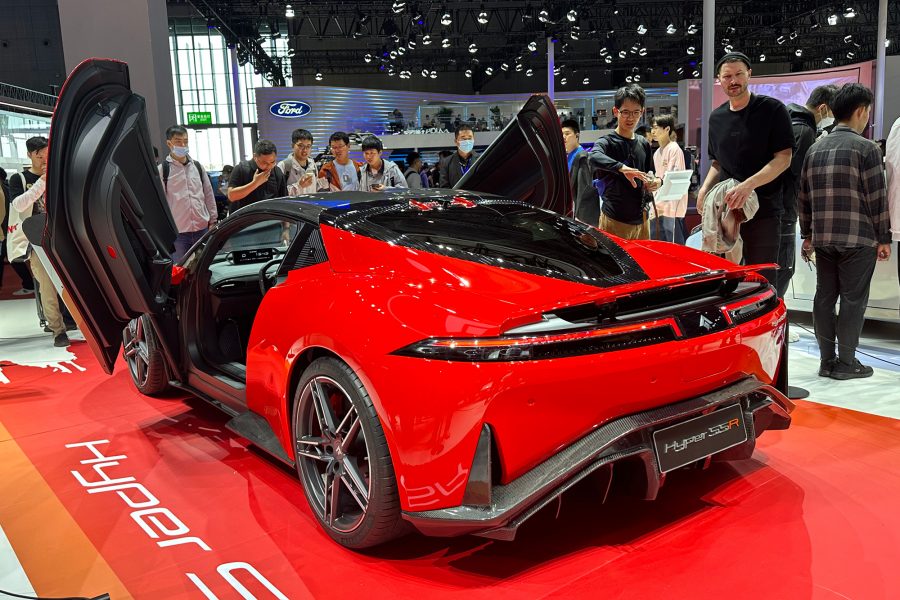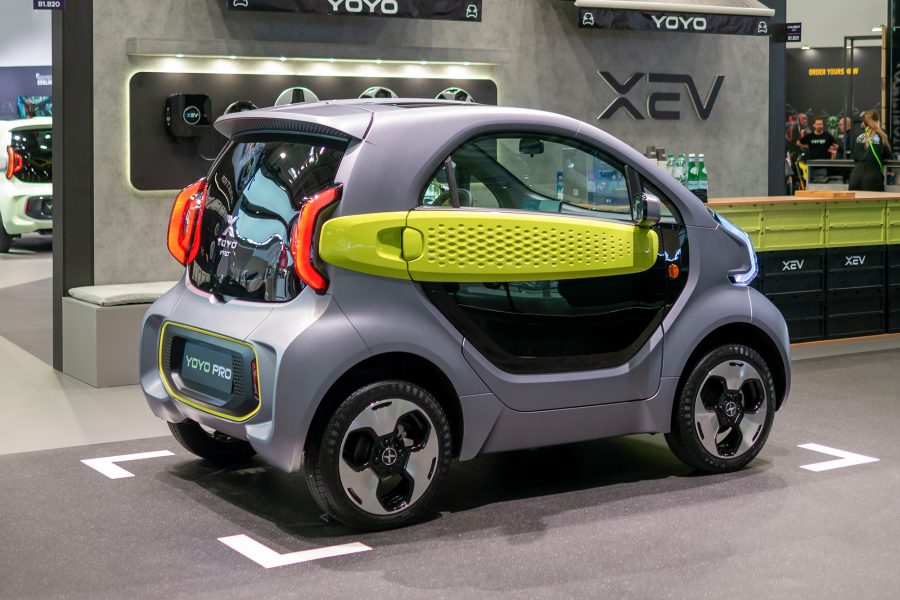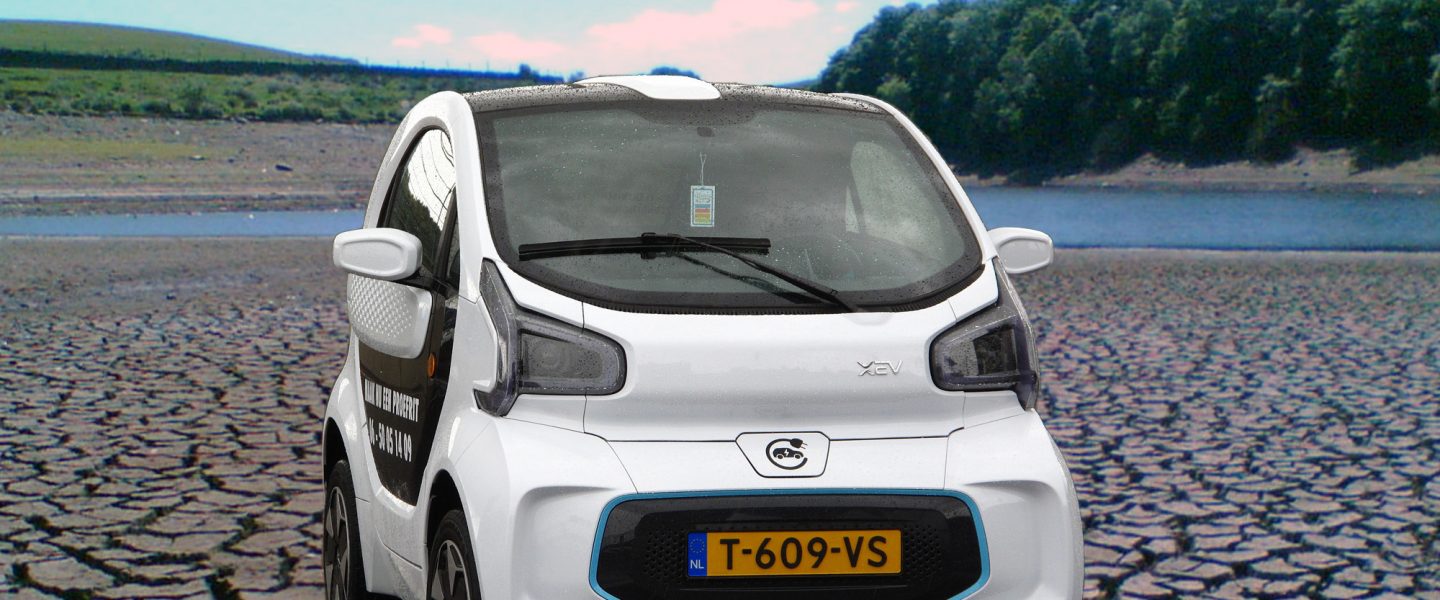On EVs and Climate Change, Trump and GOP Are Stuck in Reverse
The Chinese have seized the future.
|
Listen To This Story
|
That Donald Trump hates President Joe Biden’s Inflation Reduction Act (IRA), which is key to Biden’s fight against climate change, is hardly surprising. That Trump, who has an odds-on chance of being the Republican candidate in the next presidential election, hates electric cars is even less of a surprise.
At his recent rally in Clinton Township, MI, Trump urged automobile workers not to trust Biden or his strategy to reduce US reliance on fossil fuel. “He’s selling you out to China,” Trump told the gathering. “He’s selling you out to the environmental extremists and the radical left.”
In case anyone missed the point, Trump put it more bluntly. The automobile industry is being “assassinated” he said. “You’re all on the picket lines and everything, but it doesn’t make a damned bit of difference what you get, because in two years you are all going to be out of business.”
In fact, Trump got it both right and wrong. The auto industry is not going out of business — profits have been up for quite a while — but the industry faces dramatic changes and at least some jobs will very likely be lost regardless of what anyone does.
The biggest change, whether Trump likes it or not, is the shift to electric cars. Since 2021, both solar power and electric vehicle, or EV, sales have taken off. New sales of electric cars in the US increased by 55 percent in 2022, according to the International Energy Agency (IEA). The IEA reports that EVs now account for 8 percent of new sales in the US market. In Europe, one out of every five new cars is electric.

Biden’s IRA, which offers a tax rebate of up to $7,500 on purchases of a new EV and up to $4,000 on a used EV, will give a boost to sales in the US. According to Simple Insurance, a company that tracks vehicle sales, an estimated 2 million electric cars and trucks are currently registered in the US and nearly three times that many hybrids.
That is still less than 2 percent of the American market, but the American market is less and less important in a globalized world. There are now an estimated 1.474 billion cars on the planet, and the US accounts for less than 20 percent of that total.
While roughly 290 million cars are currently on the road in the US, China has 320 million cars and trucks and India has 326 million. When it comes to climate change, the US is no longer the main problem.
While Republicans in particular are dithering about climate change and have launched a rear-guard action to keep fossil fuel-powered cars from being gradually phased out, at least 40 companies in China are now fully focused on producing EVs in what is turning out to be a ferociously competitive market.
The Chinese, in short, have seized the future. They are establishing networks of parts suppliers and access to raw materials that will eventually make it economically impossible for American companies to compete.

The situation is less obvious to average Americans, because it’s almost impossible to buy Chinese EVs in the US. China hasn’t bothered to conform to onerous US safety standards, mostly because it felt it didn’t need to, since 80 percent of the global market is outside the United States.
The leader by far when it comes to switching to EVs is Norway, where EVs account for nearly 4 out of 5 new car sales, thanks in large part to tax incentives from the government. There is a certain irony in this, since Norway’s prosperity these days comes largely from 120 oilfields on the Norwegian continental shelf. Norwegian oil reserves, which stood at 12 billion barrels in 1997, have since declined to 7.9 billion barrels. The knowledge that the oil reserves will eventually run out is an incentive to develop alternative energy, although domestic critics are now questioning how long the government can continue to offer tax incentives.
The real target for China’s EV manufacturers is the vast assortment of emerging economies that are now ready to become serious car buyers. Chinese exports to these markets increased a whopping 131.8 percent last year.
It may already be too late for American manufacturers to catch up. It’s an old axiom that innovation takes place on the factory floor. Competing companies in China have established a hammerlock on the critical ingredients used in EV batteries, and since they are actively engaged in developing new EV technologies, they are likely to expand their current lead over Detroit.
Besides that, China mines more than two-thirds of the world’s graphite, extracts 60 percent of the rare earth minerals, and owns almost half of the world’s cobalt mines, in addition to controlling a quarter of the lithium used in EVs.

While Chinese manufacturers have been establishing their foothold in the market, many Republicans give the impression that they would be more than happy to go back to burning coal or at least a future based on natural gas and fracking.
That is not going to happen.The dire effects of climate change are already too frightening — and costly — to ignore. According to Forbes, the US suffered at least 18 different climate disasters that cost more than $1 billion each in 2022. The total bill for climate damage was $175.2 billion.
The Canadian government estimates that uncontrolled forest fires are costing Canada $11 billion (Canadian dollars) a year. And such events don’t respect national borders. Forest fires raging out of control across most of Canada led to life-threatening clouds of pollution that shut down flights and outdoor events in New York City in July.
The National Oceanic and Atmospheric Agency (NOAA) reports that the US has already experienced 15 climate disasters costing more than $1 billion each this year. The total cost for 2023 so far is estimated at $32.7 billion. Florida has experienced so many intense hurricanes that insurance companies are abandoning the state.
Switzerland’s GLAMOS Glacier monitoring center reports that the country’s 1,400 remaining glaciers, the most in Europe, have lost 10 percent of their volume in just the last two years. That is as much loss as the glaciers experienced in the 30 years from 1960 to 1990. Winter snows are so sparse these days that they no longer protect the ice from direct sunlight. In 2006, part of the Eiger, Switzerland’s most famous mountain, collapsed in a landslide that involved more than 700,000 cubic meters (~24,720,000 cubic feet) of rock. Speculation was that the ice that held the mountain together had melted. Whether that was due to climate change or not, Switzerland has had to assess whether bouts of global warming will eventually lead to highways and bridges collapsing.
The melting ice caps in the Arctic, Antarctic, and the Himalayas currently cause numerous floods, but eventually, when the ice is gone, the rivers that they supply will dry up. Transportation of commercial goods on the Rhine River and in the American Great Lakes was affected when unusually high summer temperatures combined with less rainfall forced barges and ships to shed weight because the water was no longer deep enough to let them pass.
 The International Energy Agency (IEA) reported in its latest Net Zero Roadmap that the human race can still save itself from the increasingly lethal results of climate change if the rise in global temperature can be kept to 1.5 degrees Celsius, or about 2.7 degrees Fahrenheit. But that will only be possible if the current investment in alternative energy is doubled.
The International Energy Agency (IEA) reported in its latest Net Zero Roadmap that the human race can still save itself from the increasingly lethal results of climate change if the rise in global temperature can be kept to 1.5 degrees Celsius, or about 2.7 degrees Fahrenheit. But that will only be possible if the current investment in alternative energy is doubled.
Climate change deniers that look to technology to cool things off are likely to be disappointed. The IEA originally predicted that new technologies not yet on the market would be able to cut greenhouse emissions by 50 percent by 2050. It now predicts that a 35 percent reduction is more realistic.
The grim alternative to phasing in alternative sources of energy is to wait until global warming triggers ever more widespread disasters — with ever more deadly consequences that finally force head-in-the-sand politicians to act.
The Chinese word for crisis, wei ji, combines two characters. The first, wei, signifies crisis. The second, ji, signifies opportunity. In early 2000, I interviewed Sir John Browne, who was then the group chairman of British Petroleum. “Climate change will cost us billions,” Browne said, “but whoever has control over the energy of the future will make trillions.”
China clearly gets it. Apparently, Donald Trump and his MAGA Republican followers do not.




